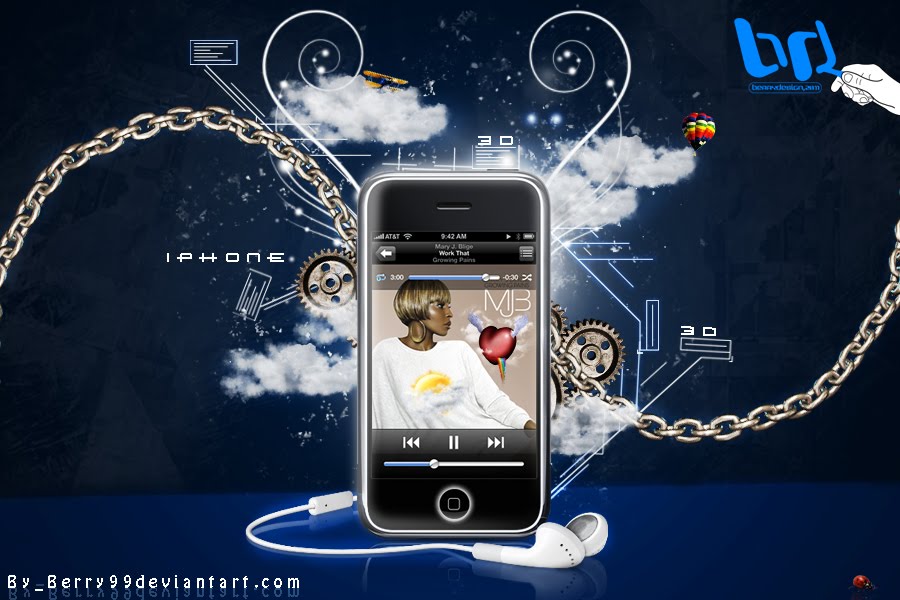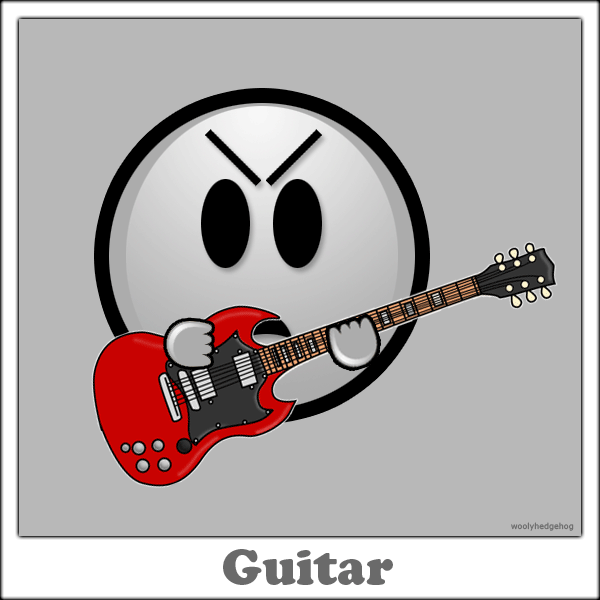Create a New Retro Text Effect in Photoshop
Faking aged, printed media has been massive since the ‘grunge’ style first became mainstream years ago. Textured work with a vintage feel is still very popular, but more recently it’s the ‘new retro’ style that’s captured the imagination. The general idea is to create a vision of the future… from the past. This effect is good for all sorts of projects, flyers, websites, posters. It works particularly well with music based projects. I’ll take you through the motions for type and, if you dig then I’ll show you how to incorporate images next time.
Here’s what we’ll be creating. Click on the image for a full preview.
Step 1
Create a new canvas in Photoshop, we’ll be working on a 250 x 180 mm sized canvas in RGB mode at 300 dpi. This is important because the values for filters that work on pixel sizes will need to be amended if you’re working on a different sized canvas.
Step 2
In Photoshop select the Gradient Tool (circled) and click the Gradient Editor (circled) on the Options Bar (Window > Options) to edit the gradient. Change the two colour values as in the screen grab, you’ll need to click the little colour tab and the rectangle marked ‘Color’. Enter the two values in the field marked ‘#’ in the Color window that pops up. Change to a Radial gradient in the Options bar and draw from the center outwards.
Step 3
Select the Horizontal Type Tool and a font you want to use. I’ve gone with a classic, if not overused, sans serif font called Avant Garde. I then did a version using Century (a serif font), which worked a lot better.
Type in SHINY and then go to Layer > Layer Style > Gradient Overlay and set up as in the Photoshop screen grab.
Then add a Stroke and an Inner Shadow layer style to the text using the screen grabs as guides.
It’s also worth mentioning that I had to reduce the Kerning in the ‘N’ and the ‘Y’ to even out the spacing.
Step 4
Create a new layer beneath SHINY, then select both SHINY and the new layer and go to Layer > Merge Layers. This will cause Photoshop to rasterize both the text and the Layer Styles so that we can build more Layer Styles on top. There’s possibly a better way to do this though simply rasterizing the text layer will not do this, not in CS2 anyway.
Then add a Gradient Overlay Layer Style as shown in the screen grab.
Repeat the layer merging process and add another Gradient Overlay (with the black and 50% black). Once again, repeat the merge process so there are no editable Layer Styles left on your text.
Your text should look something like the screen grab.
Step 5
Duplicate SHINY (Layer > Duplicate Layer) and apply an 8 pixel Gaussian Blur filter (Filter > Blur > Gaussian Blur) to the copy. Make sure the original is above it in the Layers palette.
Step 6
Duplicate SHINY (the un-blurred layer) and go to Filter Blur > Radial Blur. Set it to Zoom, Best quality and apply at 100%. Set start point to be centered at the bottom in relation to your text.
Step 7
The zoom isn’t quite the right size for our needs. Go to Edit > Free Transform to bring up the Free Transform bounding box. Hold shift whilst manipulating the corner points to constrain the aspect ratio.
Then add a Smart Sharpen (Filter > Sharpen > Smart Sharpen). Add a Layer Mask (Layer > Layer Mask > Reveal All) and erase the parts you don’t need using the Eraser Tool as set up in the screen grab. Rename this layer ZOOM_BLUR.
Step 8
Duplicate ZOOM_BLUR and set the copy’s Layer Blend Mode to Multiply.
Step 9
CTRL+Click on ZOOM_BLUR’s Layer thumbnail (not the Mask thumbnail), this will create a selection from it. Then go to Select > Inverse Selection.
Create a new layer beneath ZOOM_BLUR and call it FILL_LIGHT and fill it with White.
Apply the same Gradient Layer Style (don’t do the Inner Shadow or Stroke) as you did for the text in Step 3.
Create a Layer Mask and use the Eraser Tool to delete any unwanted areas. I find you get better results by reducing the Opacity of The Eraser Brush to around 30% and repeatedly chipping away at the mask so it blends. Use the screen grab as a guide.
Finally, reduce the Layer’s Opacity to 50% and move it below SHINY in the Layers Palette.
Step 10
Select the Line Tool. Set it to Shape Layers on the Options Bar, with an 8 pixel Weight. Draw in a white Line. Use Rectangular Marquee Tool to mark off a rectangle spanning the length of the line you just made.
Select the Paintbrush Tool and set up a big soft-edged brush. Take the Flow down to 21 and start to draw in some glow, making more passes over the edge that connects with the line. Use the Screen Grab as a guide.
Select this layer and the line layer and merge them. Rename this layer TWINKLE and apply a Gaussian Blur (Filter > Blur > Gaussian Blur) as in the screen grab.
Step 11
Use the Eraser Tool (set up as in the screen grab) to delete the hard edges.
Duplicate TWINKLE and move it parallel. Duplicate it again and use the Free Transform Tool to rotate (90 degrees), resize and reposition.
Step 12
Create a new layer and fill it with black. Go to Filter > Render > Lens Flare and set up as in the grab.
Try and center the flare so all the elements line up on top of each other.
Adjust the Levels (Image > Adjustments > Levels) to knock out unwanted glow and increase the center. Then go to Image > Adjustments > Desaturate.
Select your four associated layers (TWINKLE and its two duplicates and the lens flare) and group them, call the group STAR.
Step 13
Use the Free Transform Tool to rotate, resize and reposition the star. Make duplicates of the STAR group and rotate, resize and reposition. As each element of the STAR group is on its own layer you can tweak each part of the star until you’re happy.
Create a new layer beneath all your STAR groups and call it GLOW. Select the Brush Tool and set up as in the screen grab, then draw some extra glow behind each star picking a brush size to match.
Step 14
Group all your image layers (except the background) together and call it SHINY. Duplicate this group and go to Edit > Transform > Flip Vertical. Create a Layer Mask for the group (Select the Group and go to Layer > Layer Mask > Reveal All) and use the Gradient Tool, set to Linear with white and black colours to mask off the bottom, creating a reflect effect. Reduce the Layer Opacity to around 50%.
Step 15
Now go grab your favourite old paper textures. These ones from bittbox are pretty good. I used paper2.jpg, pasted it into the document and moved it to the top of the layer palette. Change the Layer Blend Mode to Multiply.
It looks too dark currently so go to Layer > New Adjustment Layer > Levels, check the box marked ‘Use Previous Layer To Make Clipping Mask’ and set up as in the screen grab. To increase the texture, duplicate the paper layer, desaturate and set it’s layer Blend Mode to Hard Light. Drop the layers Opacity down to 58%.
Step 16
Select ALL of your layers and merge them together. Put this new layer at the top of the layers palette (we’ll keep the originals just in case). Duplicate this layer and desaturate it.
Then go to Image > Adjustments > Invert. Apply a 40 pixel Gaussian Blur, turn the layer Blend mode to Overlay. Add a Levels Adjustment Layer (Layer > New Adjustment Layer >Levels) as in the screen grab.
Step 17
Go to Mode > Grayscale. Select Flatten in the pop-up window. Then go to Mode > Bitmap and follow the screen grabs to deal with the Bitmap and Halftone Screen pop-up windows.
Once it has been applied, select the entire canvas and load it onto the clipboard (CTRL+C). Go to your History palette (Window > History) and click back to just before you changed to Grayscale Mode. Then paste the copied bitmap layer and move it to the top of the Layers palette.
Select the Magic Wand Tool and un-check the Contiguous box on the Options bar. Use the wand to select any patch of white on the bitmap layer, then delete all the white.
Step 18
Change the bitmap layers blending mode to Soft Light and it’s opacity to 80%. Then tweak the opacities of your other three final layers as shown in the screen grab. These should be your merged art layer, the copy which was desaturated, inverted & blurred and the Levels Adjustment layer. The copied art layer should also be set to Overlay.
Conclusion
That’s mostly it… But if you want to get proper old then head over to Deviantart.com or brusheezy.com and get yourself some dirty/grunge brushes and paint in a final layer of scuffs and dirt. Don’t use white but a creamy off-white such as #ddc8b3 as your foreground colour. This will add to the aged feel. It’s worth creating a new layer to draw on and experiment with your brushes.
WDL Premium members can download the source Photoshop file below.
========================================================


Tidak ada komentar:
Posting Komentar